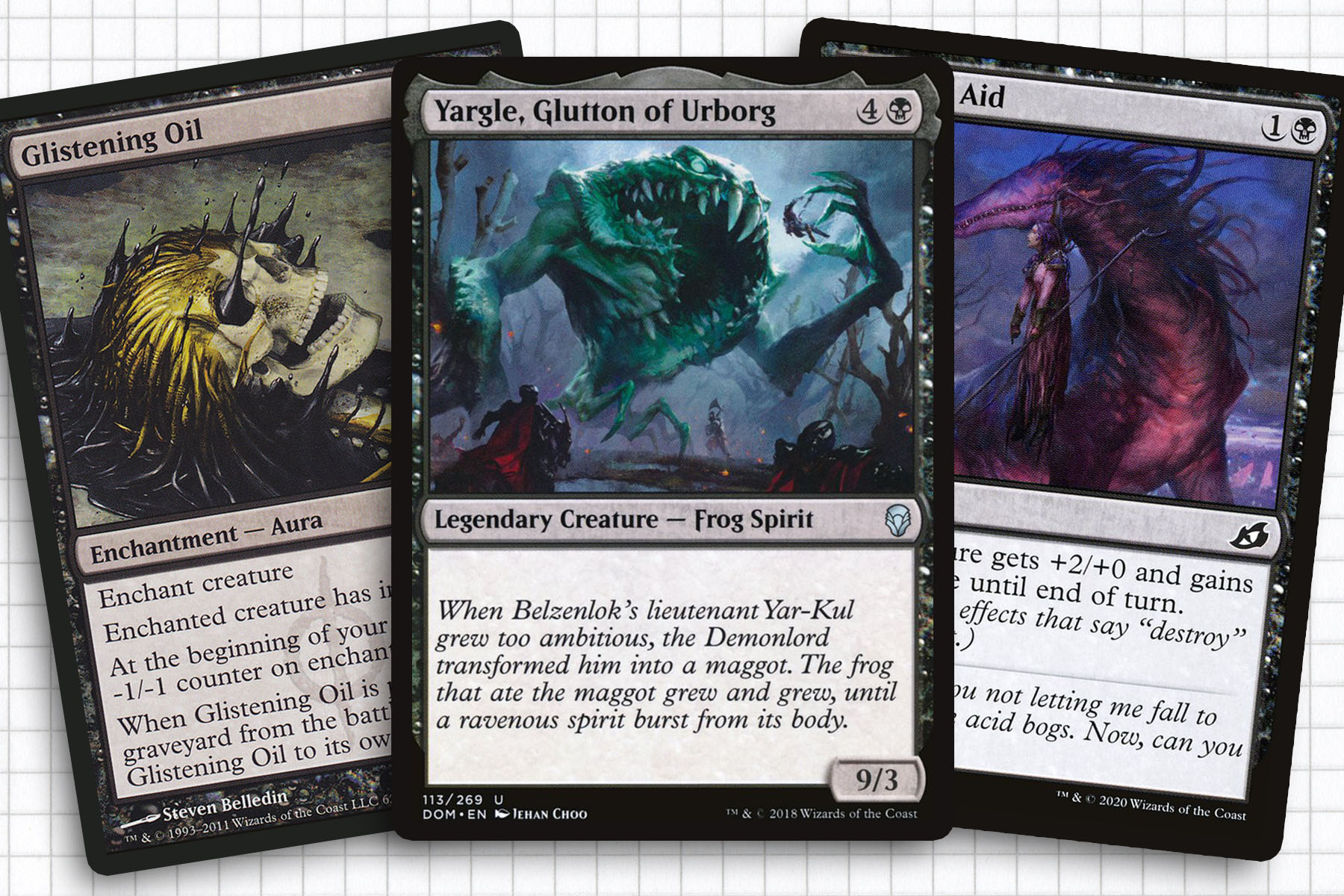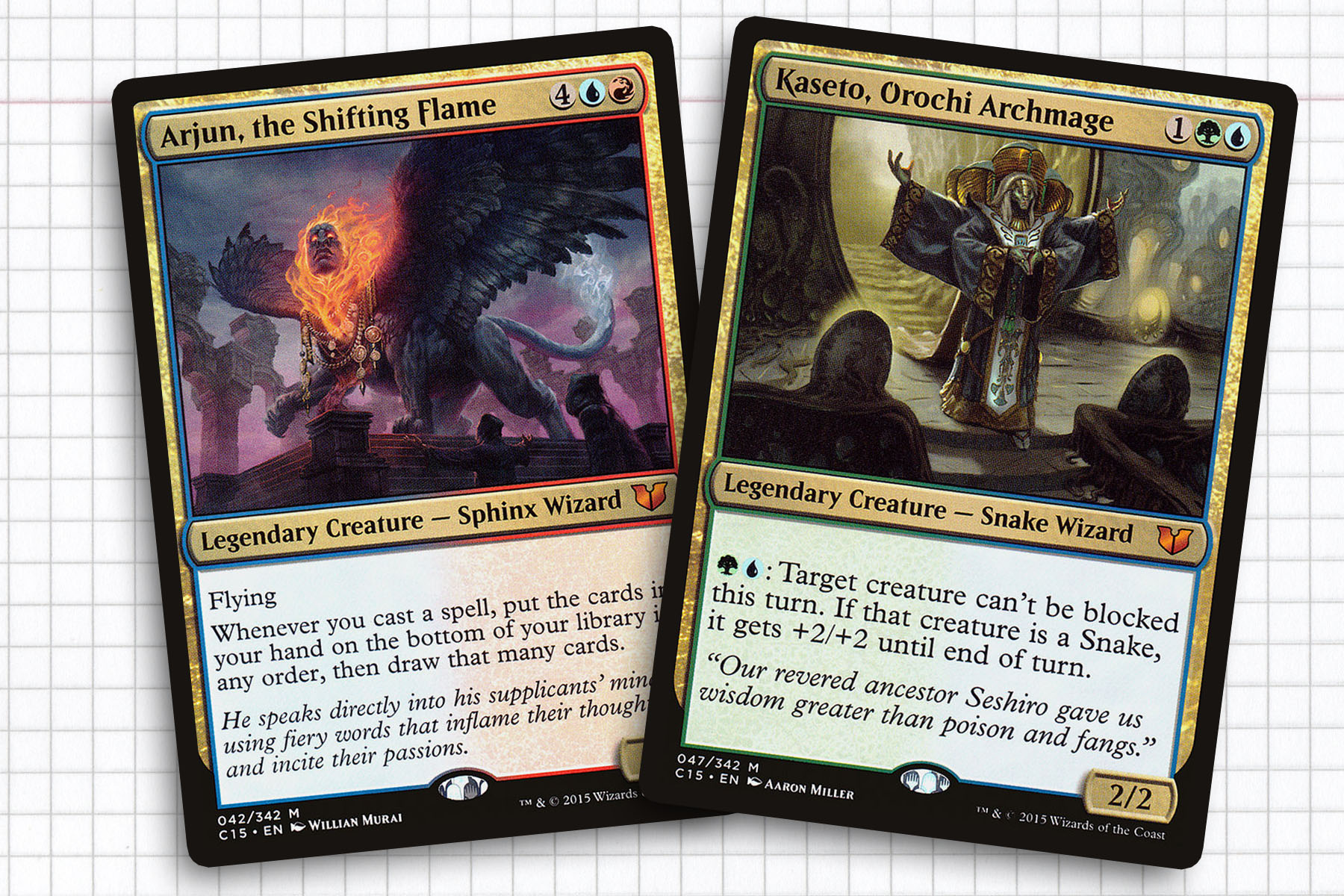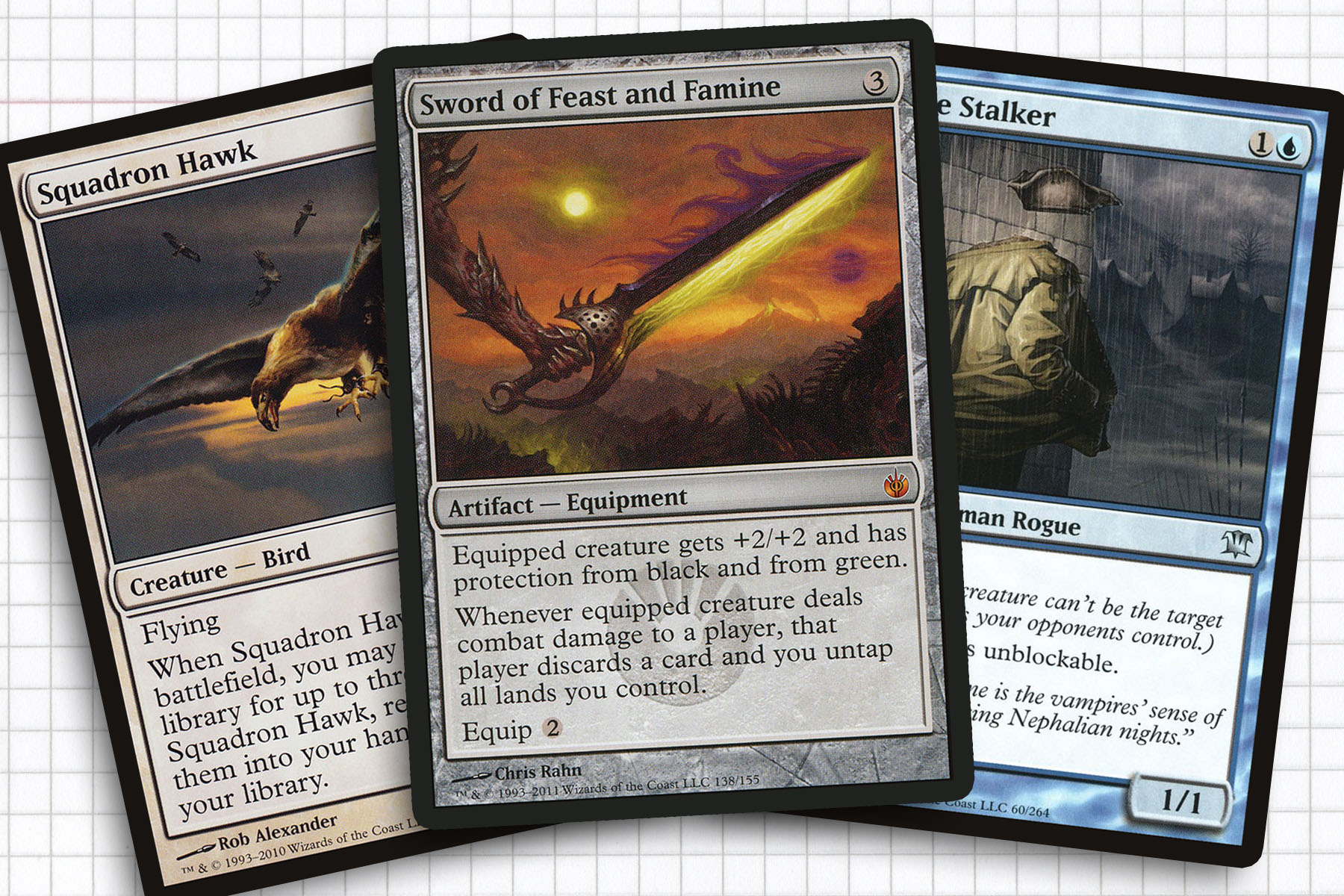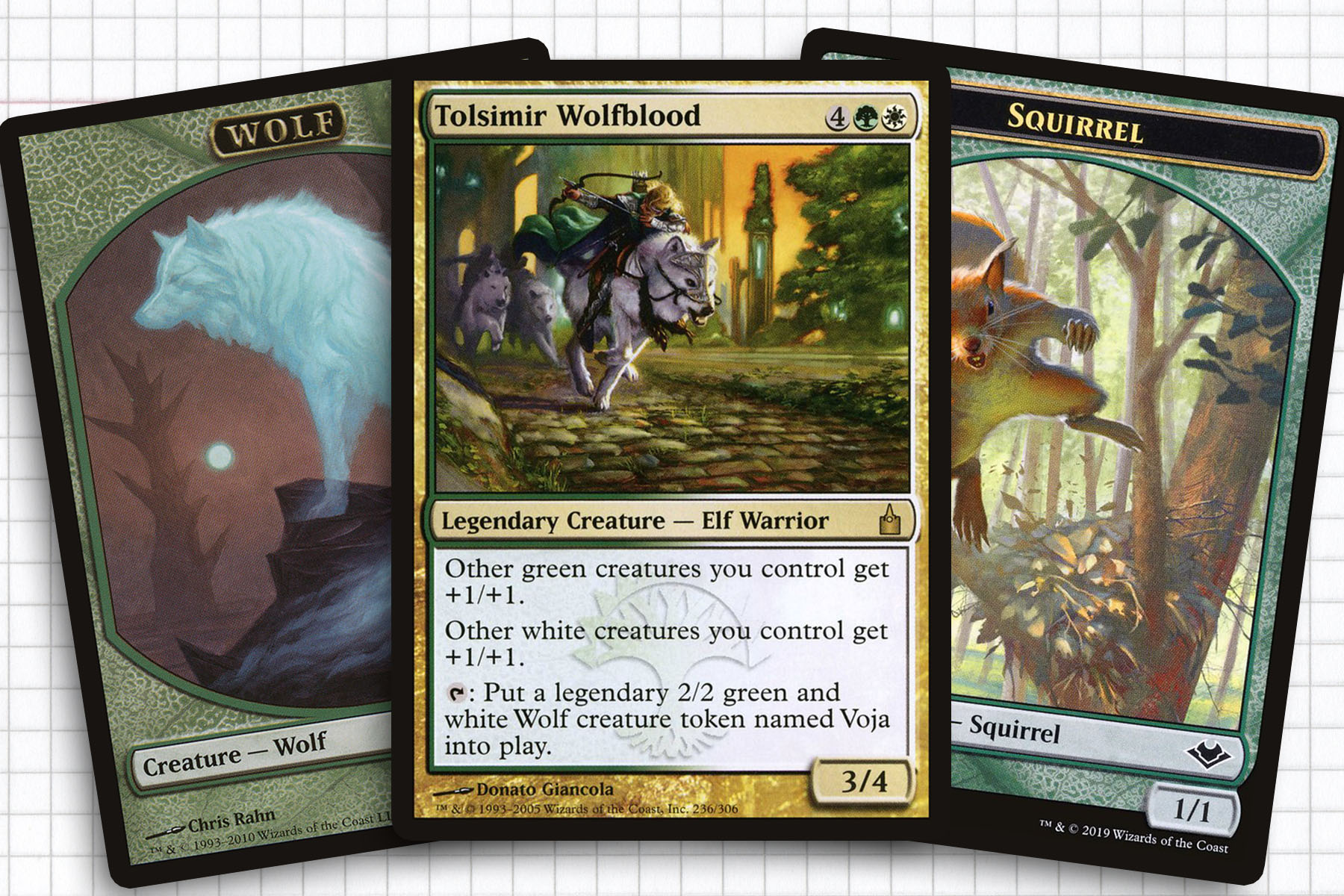Somehow, I have been building upwards of thirty decks each year for the last three and a half years for this article series. It’s pretty common that for any article, I start formulating a deck I’m building from scratch sometime over the weekend between publishing dates. It’s a tactic that has worked well for me in the past and generally allows for me to have a constructive night or two of writing once the work week starts anew. This week, I was looking to put together a deck built around Yargle, Glutton of Urborg and quite honestly, I was ashamed with how bad the deck was.
On rare occasions such as this, I will completely scrap an idea early in the week. And as I began to try to write about my Yargle build, I looked through the decklist and realized that I had built a bad deck. There’s no need to be too hard myself though, I think everybody builds a bad deck more often than they probably care to admit.
The last few months have been very isolating, and I think this state of elongated isolation has led to people being too hard on themselves about mistakes. So, instead of trying to revise the list to meet a deadline, I want to use this as a jumping off point to find some catharsis and highlight the value in mistakes.

Building in an Imperfect World
In a perfect world, you build a deck is built and bring it to your Commander night to try it out. In my case, that was a weekly experience in a few different game shops in Minneapolis six or seven years ago. Most weeks I would come armed with one or two decks that I had tuned to my level of completion, along with an experimental build, for which I likely was inspired to build after the previous week’s games. This fed off a weekly metagame among the three to six other people I might have played with in a given week and was a pretty forgiving environment to grow into the larger Commander format.
Some weeks I would hit on something really special, like my Doran, the Siege Tower deck; but most weeks were just really bad ideas hoping to coast off how cool I thought Tolsimir Wolfblood might be. When the decks didn’t work it was rather deflating, since there had been this week long build up and it was met with a thud. Resting on my laurels, I assumed that with all the years of experience, my ability to overcome this and finally uncover a sound deck idea would almost be second nature. Yet, I still concocted this mess of a deck:
General: Yargle, Glutton of Urborg
Creatures: Burnished Hart, Crypt Ghast, Duskfang Mentor, Erebos, God of the Dead, Herald of Torment, Leaden Myr, Nirkana Revenant, Sheoldred, Whispering One, Solemn Simulacrum
Enchantments: Cartouche of Ambition, Dauthi Embrace, Eldrazi Conscription, Glistening Oil, Grisly Transformation
Artifacts: Assault Suit, Basilisk Collar, Blackblade Reforged, Chariot of Victory, Cobbled Wings, Coldsteel Heart, Cranial Plating, Endless Atlas, Everflowing Chalice, Fellwar Stone, Fireshrieker, Heraldic Banner, Hero’s Blade, Lashwrithe, Loxodon Warhammer, Nim Deathmantle, O-Naginata, Prowler’s Helm, Ring of Xathrid, Rogue’s Gloves, Shadowspear, Sol Ring, Strata Scythe, Sword of Vengeance, Ur-Golem’s Eye, Vorrac Battlehorns, Wayfarer’s Bauble, Whip of Erebos, Worn Powerstone
Instants: Diabolic Edict, Doom Blade, Drag to the Underworld, Go for the Throat, Grotesque Mutation, Hero’s Downfall, Howl from Beyond, Price of Fame, Supernatural Stamina, Unlikely Aid, Unnatural Endurance, Victim of Night
Sorceries: Chainer’s Edict, Cruel Edict, Epic Downfall, Exsanguinate, Foreboding Fruit, Night’s Whisper, Painful Lesson, Unbreakable Bond
Lands: 28 Swamp, Cabal Coffers, Cabal Stronghold, Castle Locthwain, Ghost Quarter, Myriad Landscape, Nykthos, Shrine to Nyx, Reliquary Tower, Shizo, Death’s Storehouse
The intent for this deck was to build a Voltron strategy around Yargle, leveraging his high power to deal general damage very quickly. But intention and reality can be different. One of the first glaring issues to me is the non-existent mana curve. To be fair, there are decks that purposefully ignore mana curves and do just fine. I don’t quite believe that this is one of those decks. Here, 41 cards fall into the two- or three-drop slots inadvertently. This design flaw means that I left myself with no options for powering through for a win if my commander is not in play.
Additionally, there is a lot of mana production, but nothing to put all the mana into. I’ve overlooked mass removal and I found room for Glistening Oil, but no other methods for delivering poison. Again, the thought was that by stacking the deck with enough equipment, Yargle would just make it happen with general damage. But constructing your deck around a dependency for your general over synergy is never a good idea. I believe it was Emma Handy who said that in a Commander deck, you don’t want to construct your deck in such a way where it only works if your Commander is in play. This is valuable advice and I don’t take it to heart enough.

Starting with a Plan
Building a new deck can be very intimidating, I think that’s why hitting a wall, realizing that you’ve built something that’s ineffective can be so difficult for people looking to start out in the format. This is why even if they don’t always feel like they aimed at me, I really appreciate the Commander products that come out every year. This is the most basic form of a net deck for our format and a solid base I have recommended to many seasoned Standard and Modern players who are looking to dip their toe into our casual format.
Of course, when you want to build around the Arasta of the Endless Web you just pulled out of a pack, aggregate sites like EDHrec exist. There’s really no shame in looking at what works, I will confer with EDHrec when I’m trying to figure out the last bits of an unruly deck. You may unintentionally miss out on hidden gems that are just not going to come up when the hive mind builds an efficient deck. But in an effort to find something that matches the power level you’re looking for, it’s wise to get a second opinion.
This will ultimately only get you so far, as even a deck built by a hive mind is not always going to be ideal. Just because Swords to Plowshares and Demonic Tutor are the most popular cards within their color, that doesn’t mean they fit into every deck. And I think even players who use the product or more traditional forms of net decking know that this isn’t something permanent, that at some point they’re going to let their own ideas take flight.

Finding Your Groove
Taking my deck this week as an example, I wanted to build a deck built around a vanilla creature as my general. That’s a pretty simple idea and comes with some challenge. To overcome and meet that challenge required me to dedicate more space to granting my general flying, trample, and lifelink while also finding other ways to draw cards. Due to this tunnel vision, I wound up in a place where my deck does a lot of things, but none especially well.
While this process can often be easier said than done, there can be a feeling of accomplishment when things come together. I once wanted to construct a decklist that recreated the feeling of the Caw Blade deck within the confines of Commander. For the proper feel of the deck, I had to go through and define that deck for the correct attributes—ultimately as refined consistency, tutoring, disruption, and a high threat density—to be able to identify the right general and support cards to see my vision through.
On a different occasion, I wanted to build a deck where my general was Invisible Stalker. From the onset, I tried out a lot of mono blue generals before ultimately building a mono black deck around Cao Ren, Wei Commander, after identifying the power of saboteur effects. The Cao Ren deck definitely compares closely to the process of my Yargle deck, in that things didn’t really come together on the first or second draft. Both of these decks would not have been found without accepting that mistakes might be made along the way.

Making Useful Mistakes
I would like to close by discussing mistakes a little bit more. As somebody who has gone through the process of building Magic decks, along with being a graphic designer; I can say that mistakes have been stigmatized to the point of being a hindrance. Throughout my adult life, I’ve found a lot of people are afraid to be wrong. In truth, mistakes can be very useful.
The Tolsimir Wolfblood deck I alluded to earlier was a rough attempt to build a wolves tribal deck. The tribe had never really had a lot of support, but the original Innistrad block had given enough support that I felt that something might be there. Of course, my first mistake was building a Selesnya deck for a tribe that was being supported in Gruul colors. Even today, I don’t know what I was thinking. But from that experience, I discovered Trostani, Selesnya’s Voice, originally a support spell, which eventually took over as the general. I had found that I was getting more use out of the little bits of life gain and the ability to generate tokens than a single legendary creature token was worth.
From this discovery, eventually I spit the deck in two. Yasova Dragonclaw was printed, giving wolves an unconventional general that I was very happy with, while leaving Trostani behind to transform into a quirky squirrels deck. I honestly don’t believe that either of these decks would exist in the form that they presently are if I had not made the mistake of trying to build a tribal deck in the wrong color pair. This is why I can look at a decklist I constructed, realize it’s terrible, and laugh. There will always be another deck to build, another chance to right the wrongs, and maybe, something fruitful will blossom from it. Next time you make a terrible mistake, I hope you can find the fun in it regardless as well.
Ryan Sainio is a Graphic Designer who writes about EDH and the EDH community. He has been playing Magic: The Gathering since 7th Edition in 2002 and values flavorful and fun gameplay over competitively optimized decks.

